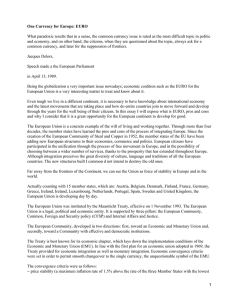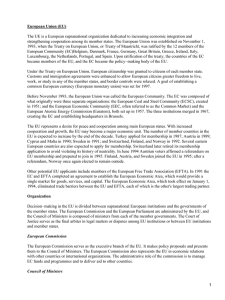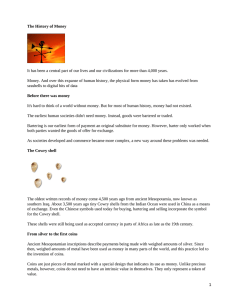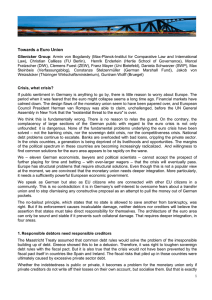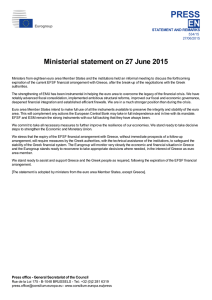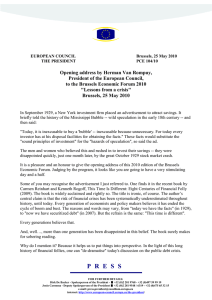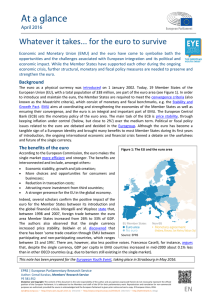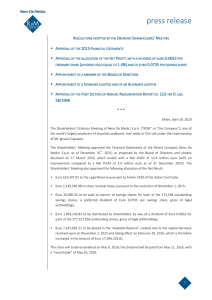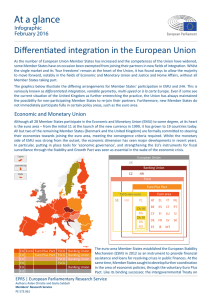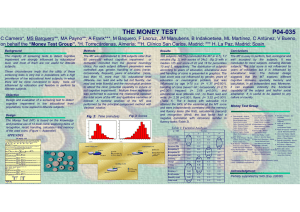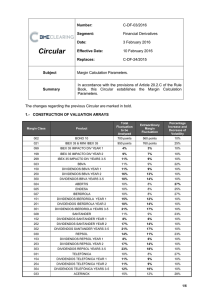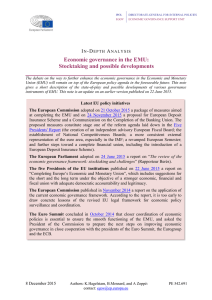The Euro
Anuncio
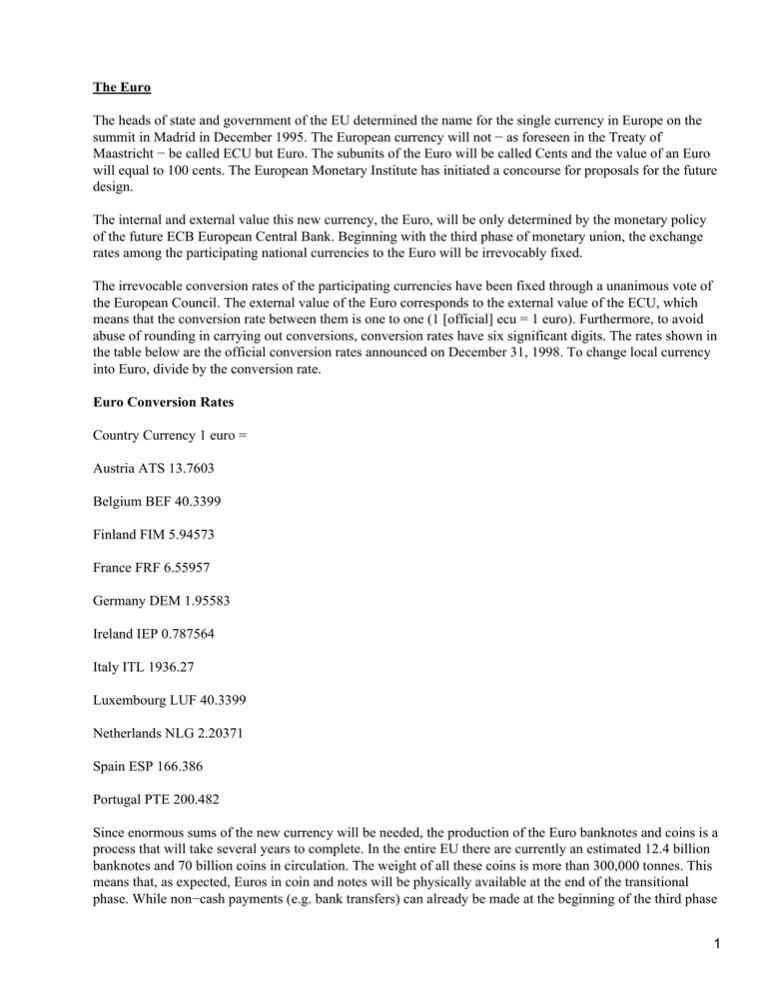
The Euro The heads of state and government of the EU determined the name for the single currency in Europe on the summit in Madrid in December 1995. The European currency will not − as foreseen in the Treaty of Maastricht − be called ECU but Euro. The subunits of the Euro will be called Cents and the value of an Euro will equal to 100 cents. The European Monetary Institute has initiated a concourse for proposals for the future design. The internal and external value this new currency, the Euro, will be only determined by the monetary policy of the future ECB European Central Bank. Beginning with the third phase of monetary union, the exchange rates among the participating national currencies to the Euro will be irrevocably fixed. The irrevocable conversion rates of the participating currencies have been fixed through a unanimous vote of the European Council. The external value of the Euro corresponds to the external value of the ECU, which means that the conversion rate between them is one to one (1 [official] ecu = 1 euro). Furthermore, to avoid abuse of rounding in carrying out conversions, conversion rates have six significant digits. The rates shown in the table below are the official conversion rates announced on December 31, 1998. To change local currency into Euro, divide by the conversion rate. Euro Conversion Rates Country Currency 1 euro = Austria ATS 13.7603 Belgium BEF 40.3399 Finland FIM 5.94573 France FRF 6.55957 Germany DEM 1.95583 Ireland IEP 0.787564 Italy ITL 1936.27 Luxembourg LUF 40.3399 Netherlands NLG 2.20371 Spain ESP 166.386 Portugal PTE 200.482 Since enormous sums of the new currency will be needed, the production of the Euro banknotes and coins is a process that will take several years to complete. In the entire EU there are currently an estimated 12.4 billion banknotes and 70 billion coins in circulation. The weight of all these coins is more than 300,000 tonnes. This means that, as expected, Euros in coin and notes will be physically available at the end of the transitional phase. While non−cash payments (e.g. bank transfers) can already be made at the beginning of the third phase 1 of monetary union, the use of Euros as cash will be possible only when it is physically in existence. The denomination of the new currency will follow a logical sequence. At their meeting in Versailles on April 8/ 9, 1995, the presidents of the central banks determined that the Euro should be denominated in the sequence of 1−2−5, resulting in 15 different denominations of coins and banknotes from 1 cent to 500 Euros. Denominations up to two Euros will be issued as coins and five and more Euros as banknotes. A "modified deadline" model has been developed in order to avoid an excessively long period during which new and old coins are in circulation at the same time when Euro notes and coins are introduced on January 1, 2002. The trade associations approved the model in a joint declaration issued on October 22, 1998. The Federal Government is preparing a legislation draft on the introduction of Euro notes and coins, which is to be put before the legislative as soon as possible. The modified deadline model specifies that from January 1, 2002, the Euro will be the only legal currency. However, as the physical exchange of notes and coins cannot be carried out overnight, the retail trade, service companies, vending machine operators and banks will continue to accept and distribute local notes and coins at least until February 28, 2002. The banks, however, will only issue a limited amount of local coins until the end of February 2002; this is to be done so that vending machines that have not been converted to the Euro immediately on January 1, 2002, can continue to be used. The German saving banks organisation and other sectors of the banking industry have also agreed to aim for "flexibility of customer relations" beyond the deadline on February 28, 2002. This entails the continued acceptance of local cash given that the Bundesbank intends to continue exchanging local notes and coins after the transitional period indefinitely and at the irrevocably fixed conversion rate. 2
